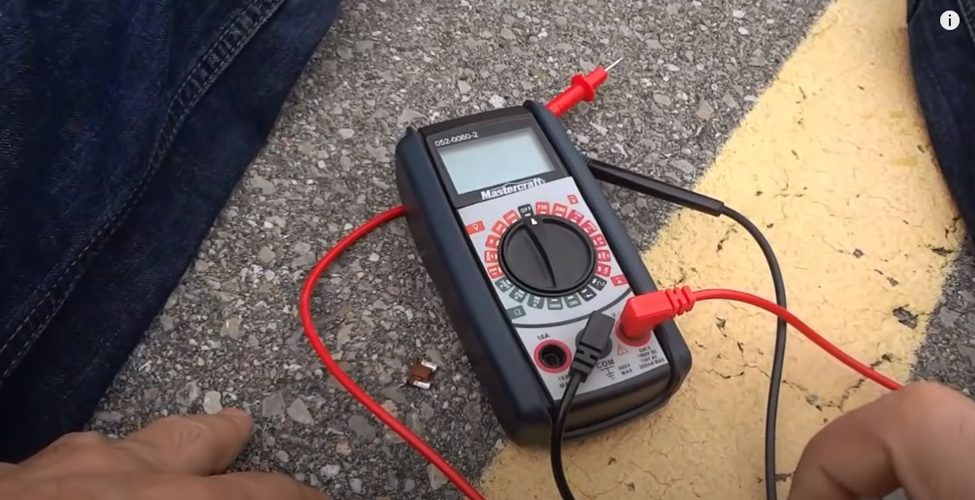Can Continuity Check of a Voltmeter
Contents
- What is the Multimeter Continuity Setting?
- What is the Symbol of Continuity on a Multimeter?
- What is a Good Reading for Continuity?
- How Do I Check Continuity without a Multimeter?
- What Do the Settings on a Multimeter Mean?
- FAQs
- What is the difference between continuity and resistance?
- Should I have continuity between phases?
- What is bad continuity?
- Do all multimeters test continuity?
- What can be used to check continuity?
- What happens if a wire has continuity?
- Is continuity good or bad?
A digital multimeter is one of the most useful tools you can use to troubleshoot electronics. The continuity setting on a multimeter allows you to check if there is a complete path for electricity to flow between two points.
What is the Multimeter Continuity Setting?
The Multimeter Continuity Setting is used to test if a circuit is open or closed. The Multimeter Continuity Setting will indicate when there is a complete circuit and when there is not a complete circuit. (1)
When using the Multimeter Continuity Setting, you are looking for an audible response. When there is no continuous connection between test leads, you will not hear an audible indication. When the test leads touch each other, you will hear an audible indication.

What is the Symbol of Continuity on a Multimeter?
The symbol for continuity on a multimeter is a diagonal line with an arrow at each end. It looks like this: → ←
You may check more here for the multimeter continuity symbol.
What is a Good Reading for Continuity?
When testing continuity with a multimeter, you are looking for readings that show resistance between 0 ohms and 20 ohms (Ω). This range indicates that there is a complete path for the electricity to flow. Sometimes, when checking continuity through long wires or cables, you may see higher resistance readings that are still continuous. This can be caused by interference in the wire.
How Do I Check Continuity without a Multimeter?
Continuity testing can also be performed with a battery and bulb setup. With one lead of the battery touching one side of a bulb, attach the other side of the battery to one lead of your device under test (DUT). Touch the other DUT lead to the other side of the bulb. If there is continuity, the bulb will glow.
What Do the Settings on a Multimeter Mean?
Multimeters have several settings that can be used to measure voltage, current, and resistance. The continuity setting is useful for checking if a circuit is complete or it is important because it allows you to check that there is a path for electricity to flow between two points.
FAQs
What is the difference between continuity and resistance?
A multimeter on the continuity setting is measuring resistance. The resistance between two points is zero when there is no resistance (the circuit is complete) and infinite if there is no connection (the circuit is broken). On most meters, the beep threshold is about 30 Ohms.
Therefore, a multimeter will beep when there is a short circuit or when the leads are directly touching one another. It will also beep if the testing leads are touching a wire with a very low resistance to the ground (like connecting a meter lead to the ground wire in an outlet).
Should I have continuity between phases?
No. How are you testing for continuity? Be sure you are not in the amp range by accident. If you are testing for continuity properly and getting a reading, then you have a problem.
What is bad continuity?
Every conductor has some amount of resistance when carrying electric current. Conductors with low resistance are ideal because they allow more current to flow through them without heating up as much. If a resistor has more than 10-20 Ω (ohms) of resistance between its terminals, then it could be faulty and should be replaced. (2)
Do all multimeters test continuity?
Not all multimeters have continuity settings, but they will usually have other settings that can be used to test for broken circuits. You can use the Multimeter's resistance setting or its diode setting to find breaks in a circuit.
What can be used to check continuity?
The continuity setting on a multimeter tests the resistance between two points in an electric circuit. If there is zero resistance, then the circuit is complete, and the device will emit an audible tone. If the circuit is not complete, then no tone will sound.
What happens if a wire has continuity?
If there is continuity, this means that there is no break in the wire, and electricity can flow through it normally.
Is continuity good or bad?
Continuity is a good thing. Continuity means that there is a complete path for electricity to flow. When you put your Multimeter into the continuity setting, you're seeing if electricity can flow through the object you're testing. If it can, then you have continuity, and your Multimeter will beep or display a number on its screen (depending on which type of Multimeter you have). If you do not hear a beep or see a number, then there is no continuity, and electricity cannot flow through the piece of equipment.
Take a look at some of our related articles below.
- Multimeter resistance symbol
- Multimeter diode symbol
- Multimeter setting for car battery
References
(1) complete circuit – https://study.com/academy/lesson/complete-open-short-electric-circuits.html
(2) Conductors – https://www.thoughtco.com/examples-of-electrical-conductors-and-insulators-608315
Video References
Helpful DIY
Simply Electronics
Dan The Technology Man
Source: https://toolsweek.com/multimeter-continuity-setting/
0 Response to "Can Continuity Check of a Voltmeter"
Post a Comment